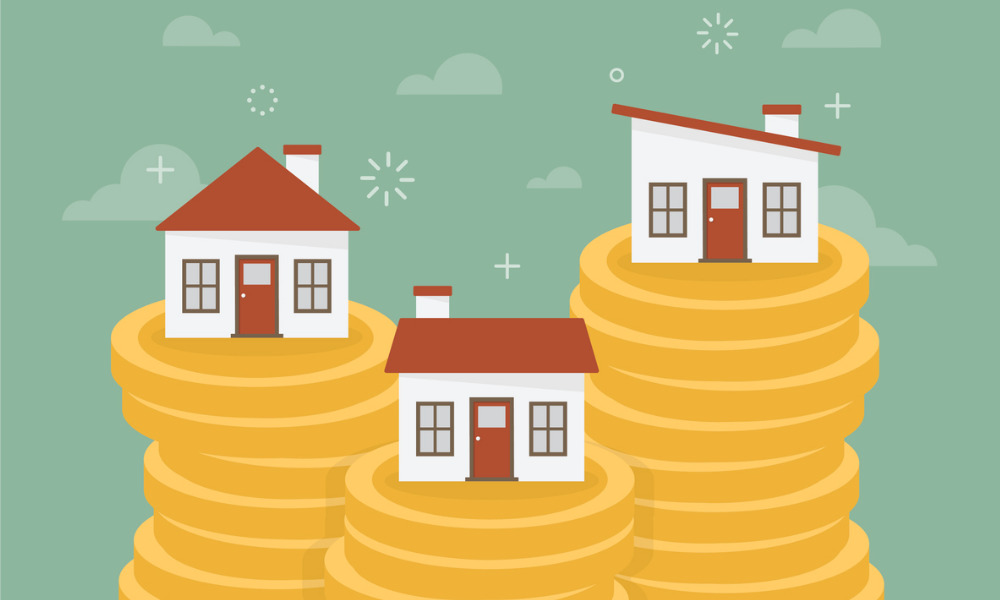Are industry experts still expecting a market slowdown?

Average house prices returned to growth in August after a slight drop in the previous month, the latest Halifax House Price Index has shown.
House prices increased by 0.4% month-on-month, recovering from the -0.1% recorded in the previous month. An average UK property now costs £294,260 – a new high. This is the seventh time out of the eight months so far this year that the average house price has reached a new peak.
Halifax, however, noted that the latest increase in house prices was relatively modest compared to the rapid inflation witnessed in recent months. The annual rate of growth also eased to 11.5% from the 11.8% in July, the lowest level in three months.
Kim Kinnaird, director at Halifax Mortgages, said that while house prices have so far proved to be resilient in the face of growing economic uncertainty, industry surveys point towards cooling expectations across the majority of UK regions.
“Buyer demand eases, and other forward-looking indicators also imply a likely slowdown in market activity,” Kinnaird said. “Firstly, there is the considerable hit to people’s incomes from the cost-of-living squeeze.
“The 80% rise in the energy price cap for October will put more pressure on household finances, as will the further increases expected for January and April. At the levels being predicted, this is likely to constrain the amounts that prospective homebuyers can afford to borrow, on top of the adverse impact of higher energy prices on the wider economy.”
Read more: How will the new energy price cap impact mortgage affordability?
Kinnaird added that while government policy intervention may counter some of these impacts, borrowing costs are also likely to continue to rise, as the Bank of England is widely expected to continue raising interest rates into next year.
“With house price to income affordability ratios already historically high, a more challenging period for house prices should be expected,” she said. “However, this should be viewed in the context of the exceptional growth witnessed in recent years, with average house prices having increased by more than £30,000 over the last 12 months alone.”
Tomer Aboody, director of property lender MT Finance, said there are now clear signs of a cooling property market.
“Buyers are still active and looking to purchase, but are now more selective and calculated in their offers, taking into consideration higher mortgage rates, higher inflation and higher energy costs,” he said, adding that sales are happening but at a slower pace.
Aboody believes that as the market continues to take shape going forward, a possible government intervention is needed to restructure stamp duty, allowing and helping buyers to get on the ladder and reducing the pain of higher mortgage rates.
James Briggs, head of personal finance intermediary sales at specialist lender Together, said consumers are bracing themselves for a bleak winter ahead as energy bills rise and borrowing becomes increasingly difficult, with interest rates predicted to hit 4% at the start of next year.
“Many will be reassessing their financial priorities and will likely pause on bigger purchases for the next few months,” Briggs commented. “With activity slowing, we should see more property introduced into the market and hopefully level the playing field between demand and supply.
“With Liz Truss now in position as the new prime minister, all eyes will be waiting to see how she plans to tackle the energy crisis, ease the cost-of-living burden, and finally address the long-standing affordability issues within the UK housing market.”
Read more: Liz Truss as new PM – mortgage industry reacts.
With the markets betting on another rate rise this month, Mark Harris, chief executive of mortgage broker SPF Private Clients, said the impetus on borrowers to move quickly to secure a competitive deal continues.
“Lenders have money to lend and are keen to lend although volume management is the name of the game,” Harris remarked. “There are still good deals to be had although rising energy bills are impacting affordability calculations and lenders are broadening their policy for higher income households accordingly.”
Meanwhile, the Halifax report also revealed house price movements at national and regional levels.
Wales remains at the top of the table for annual house price inflation, up by 16.1%, the strongest level of growth since early 2005. This means average prices have risen by £31,246 over the last year, with an average property now costing £224,858.
The South West of England also continues to record a strong rate of annual growth, up by 14.5%, with an average property cost of £313,003.
The rate of annual growth in Northern Ireland eased back further last month to 12.5%, with a typical home now costing £185,505.
Scotland also saw another slowdown in the rate of annual house price inflation, to 9.4% from 9.5%. A Scottish home now costs an average of £204,362, another record high for the nation.
While London has continued to lag behind other regions, the rate of annual house price inflation in London rose again to now stand at 8.8%, its highest level in over six years. With a typical property costing a record £554,718 the capital’s average house price has risen by £44,669 over the last 12 months.



